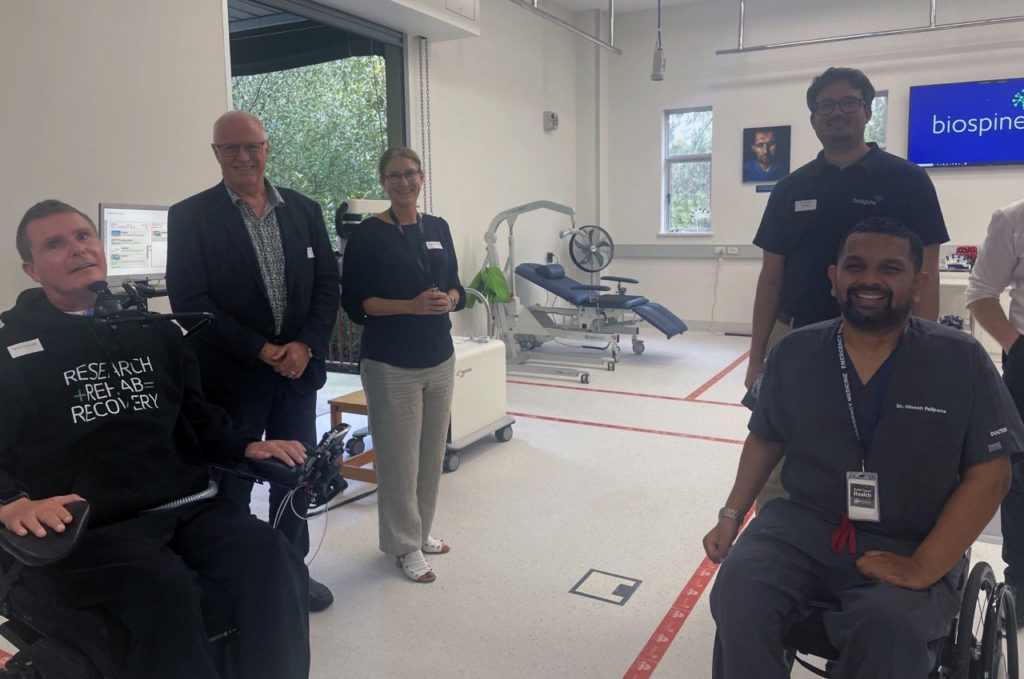
Clinical Study set to commence
`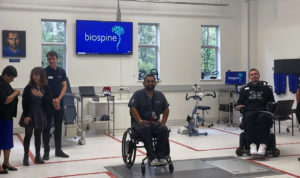

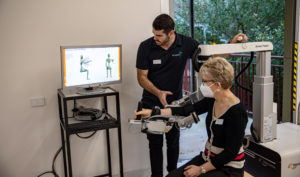

The team from Project BioSpine recently invited key stakeholders and supporters to see firsthand the technology that is coming together to ‘augment ability’, with the goal of restoring motor and sensory function in people who’ve sustained a spinal cord injury.
The new research lab provides space to train additional study participants, with a focus on testing and refining the BioSpine cycling therapy, and also provides opportunities to utilise the Armeo Power upper limb robot to target hand and arm function, with room for additional equipment to support core strength and walking gait rehabilitation.
BioSpine is co-led by researcher and study participant Dr Dinesh Palipana OAM and Dr Claudio Pizzolato, and is built on the Personalised Digital Human platform technology developed within the Griffith Centre of Biomedical and Rehabilitation Engineering (GCore) in the Menzies Health Institute Queensland.
Research is supported through principal funder, the Motor Accident Insurance Commision (MAIC), and a Perpetual Impact grant, and key partnerships including Spaulding Rehabilitation Hospital/Harvard University, University of Sydney and local film industry company Myriad Studios, who capture big-budget film quality digital scans to create rich and compelling virtual-reality environments for rehabilitation.
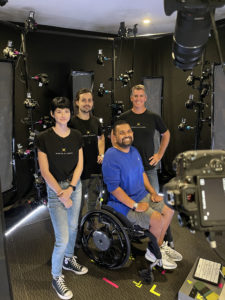
BioSpine harnesses the remarkable neuro-plastic potential of the human brain, which enables our nervous system to rewire itself after losing motor and sensory function.
Watch our video below to discover how the BioSpine approach is reimagining rehabilitation after spinal cord injury.
BioSpine utilises a robotic rehabilitation device (such as an ergometer bike) and functional electrical stimulation (FES) of the muscles, paired with a Brain-Computer interface (that reads the electrical activity of the brain to provide ‘thought control’) and an extended-reality environment (to provide sensory feedback for the patient), all integrated and controlled through a personalised digital twin (a neuromusculoskeletal model of the patient incorporating artificial intelligence).
Together with targeted drug therapy, this unique integration of technologies hopes to enable the restoration of neural pathways over time through intensive exercise.
Personalising rehab through advanced design
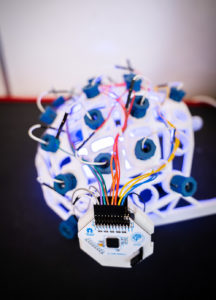 The Brain-Computer Interface
The Brain-Computer Interface
BioSpine’s non-invasive brain-computer interface (an electroencephalogram (EEG) headset) enables ‘thought control’ over the level of assistance on a robotic bike or another rehabilitation device, controlling the activation of muscles through functional electronic stimulation (FES), and providing sensory feedback via an extended reality system.
Work continues to optimise the design of the headset for the individual’s headshape, comfort and maximum effectiveness, with the goal to create a clinic friendly, high-quality headset that requires minimal set-up. Multiple prototypes have been designed and 3D printed at Griffith University’s Advanced Design and Prototyping Technologies Institute (ADaPT).